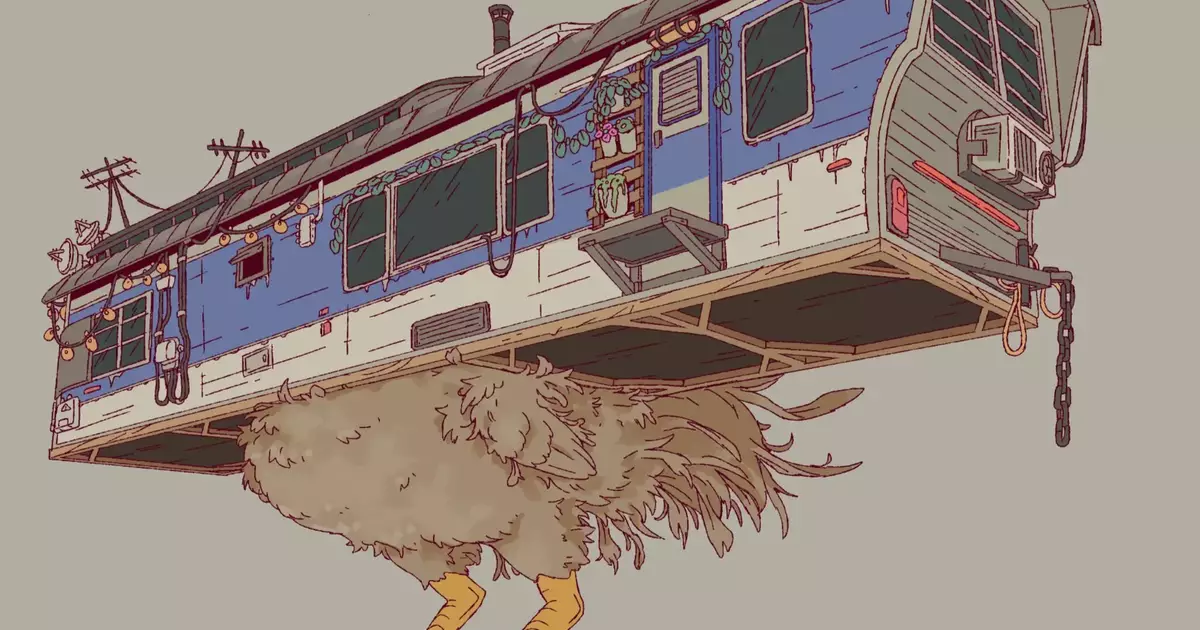The realm of video game storytelling is constantly evolving, with developers exploring uncharted territories in gameplay and thematic expression. Giant Sparrow, renowned for their captivating interactive narrative, “What Remains of Edith Finch,” is once again embarking on a unique journey. Their upcoming project, informally titled “Heron,” promises a delightful amalgamation of whimsy and melancholy, further pushing the boundaries of digital storytelling and player engagement. This article will explore the innovative strategies, thematic elements, and artistic influences that shape Giant Sparrow’s latest endeavor.
Set against the backdrop of a fantastical world where the laws of biology seem to have taken a whimsical detour, “Heron” positions players as field biologists who explore the bizarre intricacies of organic life. This creates a platform for a series of interactive vignettes, reminiscent of the anthology model seen in “What Remains of Edith Finch.” However, rather than focusing on a grim family narrative, the new project invites players to probe deeper into the peculiarities of nature. From chicken-legged houses to outlandish creatures, the imagination appears to have no bounds.
Giant Sparrow’s founder, Ian Dallas, has articulated his desire to inject a sense of playfulness into the exploration of nature. During his discussion with the New York Times, he expressed a critical view of traditional nature documentaries, which often adhere to a conventional format that sacrifices depth for accessibility. By weaving a narrative that contradicts the monotonous nature documentary style, Giant Sparrow aims to spark curiosity about the convoluted and often bizarre realities of life forms on Earth. Players are likely to find themselves immersed in narratives that not only entertain but also provoke thoughtful reflection on the underlying absurdities of existence.
A defining characteristic of Giant Sparrow’s projects is their intent to challenge the predictability of gameplay mechanics. Traditional video games often confine players to rigid structures, resulting in a chessboard-like experience where outcomes are determined and moves are calculated. In contrast, “Heron” promises a more exploratory environment where players are encouraged to engage with their surroundings in innovative and, at times, uncomfortable ways.
According to Dallas, one of the favored scenarios includes convincing a giraffe to lower its head just right so that players can complete a task. This emphasizes a blend of absurdity and emotional intensity, juxtaposing playful engagement with the inherent strangeness of animal behavior. The developers aim to highlight the unsettling beauty within nature, encouraging players to confront their visceral reactions to organic life. The interplay of horror and fascination encapsulates what can only be described as a radical departure from conventional gameplay narratives.
Giant Sparrow recognizes the need to transcend traditional frameworks of biological exploration. Dallas has voiced concerns about the superficiality of common nature-themed video games, which often result in mundane objectives such as “collecting ladybugs.” As a response, the team is integrating eccentric creatures and scenarios into their design, allowing for deeper, more nuanced gameplay experiences. For instance, the depiction of “chickens that have confused themselves with mobile homes” exemplifies how they aim to pull players into a world where the unexpected reigns.
However, this increased eccentricity is not mere novelty; it’s a deliberate strategy to confront players with the often absurd realities of biology. The aspiration is not to present a fairytale lens of nature but to reveal it in all its grotesqueness and wonder. Players will be challenged to appreciate the strange phenomena that constitute biological life, prompting deeper introspection about the everyday wonders of the natural world.
At its core, “Heron” seems poised to elicit a spectrum of emotions through its unique blend of whimsy and horror, playful exploration, and unsettling animal behaviors. The intent is clear: to create a game that encourages players to engage deeply, invoking feelings of curiosity while also leaving them with lingering questions about their own relationship to the natural world.
Just like the works of authors such as Jeff VanderMeer and the New Weird movement, Giant Sparrow’s conceptual direction hints at an intertwining of fear, curiosity, and existential contemplation. In a world free from the constraints of typical gaming narratives, players will find themselves embarking on a philosophical inquiry about choices and consequences in the ecosystem around them. Such quests challenge the notion of passivity in player agency, as the intricate interactions with non-human characters could pave the way for a richer understanding of biological intricacies.
Giant Sparrow’s upcoming project, “Heron,” is shaping up to be a fascinating exploration of the quirks and complexities of life. By embracing the whimsical and the bizarre, the developers are setting out to redefine interactive storytelling and gaming mechanics. With a foundation in a deep appreciation for both the familiar and the grotesque sides of nature, they intend to create a powerful emotional experience. As players navigate through this immersive environment, they will not only revel in the peculiarities around them but also embark on a reflective journey that challenges their perception of life itself.


Leave a Reply